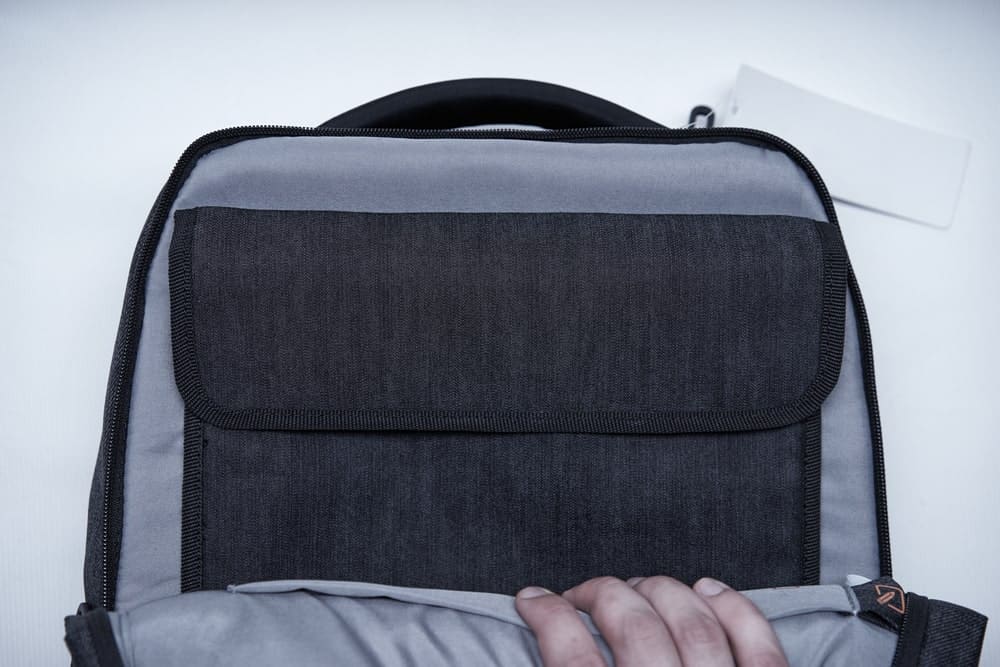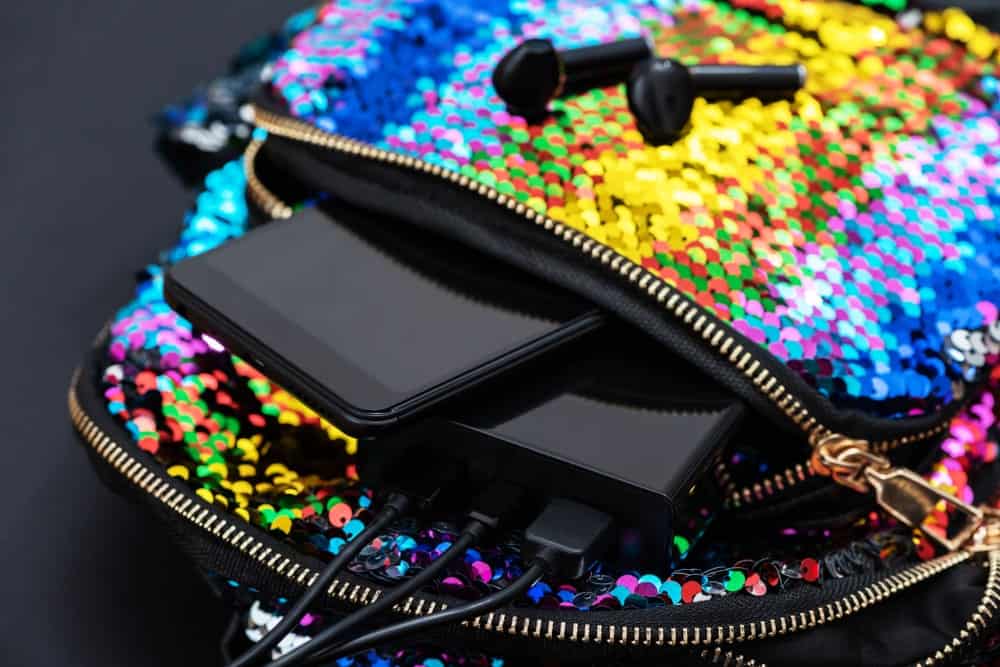Check out our full guide of things to know before buying a smart backpack. We've gathered a list of all the features, functionality, and materials that you might want to know before buying one.
When choosing a smart backpack, you have to consider first your actual needs. If you’re a student, you might want to look for backpacks with a laptop sleeve, USB ports, pen loops, and inner pockets. Business people may look for the same plus an anti-theft to secure all your stuff. A traveler may want a bigger backpack that can safeguard all of your things but it needs to be lightweight and portable to ensure you with an easier trip.
These are just a few of the things you should know and consider before buying one. A smart backpack may not be cheap so it’s better that you have knowledge beforehand. Here’s our full guide.
1. “Smart” can mean various things.
Smart technology has become so commonplace that it’s used to describe just about anything with a digital component. This also applies to backpacks. The most basic kind will provide USB ports for juicing your phone; the more high-tech models are made with built-in battery packs and charging cables for laptops, tablets, e-readers, and other devices.
Some smart backpacks even have Bluetooth capabilities to sync your music or track your location. You’ll need to look carefully at product descriptions to make sure that you’re buying the right backpack for you.
2. There’s a difference between “waterproof” and “water-resistant.”
Most smart bags come with some degree of waterproofing as a matter of course. The manufacturers don’t want their tech components to be completely unusable if you get caught in the rain. However, there’s a difference between something that’s completely waterproof and something that’s simply water-resistant.
The former can be completely submerged in a swimming pool without suffering any ill effects; the latter can protect your laptop from a storm or snowfall, but it won’t do much if you fall into a lake.
3. You might not need a waterproof backpack.
To completely contradict what you just read, waterproof bags aren’t necessarily better than water-resistant bags. For starters, they have to be manufactured very carefully to prevent leaks, so there isn’t a lot of comfort or creativity in their designs.
They also have to be made with special thermoplastic materials that can be welded together with ultrasonic technology; this is quite different from everyday fabrics that can be sewn or zippered into submission. You might not like the fit, value, or durability of thermoplastics, so you might not like waterproof backpacks on the whole. Again: You’ll need to do some research to figure out what works for you.
4. Size matters.
If you’re looking at smart backpacks, there’s a good chance that you have gadgets and gizmos that need to fit inside of it. Don’t buy a 15″ x 13″ backpack when your laptop has a 17″ screen. On the flip side, don’t buy a backpack so large that your electronics will slip around as you walk.
Find something that fits your particular devices, or invest in something with specialty compartments that can hold your phones, tablets, chargers, cameras, game consoles, and battery packs in separate places.
5. Battery life matters.
Not all smart backpacks come with power banks, but if you decide that you want one, pay attention to the stated battery life. Some will last a lot longer than others before they need a recharge.
Ideally, the product description will give you specific facts and figures like “includes 10,400mAh lithium-ion battery pack,” but if you can’t find this information freely listed on the manufacturer’s website, don’t be afraid to contact them directly and ask. Do not put your faith in vague claims like “can charge your phone three times.” Get specifics.
6. Some backpacks offer more ports than others.
If you just want a backpack that can charge your phone while you’re in class, you should be satisfied with a model that only has a single USB port. On the other hand, if you’re looking for a high-powered backpack that can meet the needs of your entire family during a camping trip, you might want to drop the dough on a smart bag with five or more USB ports.
Consider all of the devices that you might need to charge when making your final selection. Keep in mind that a good backpack will last for years, so even if you don’t have a lot of gadgets today, you might collect more over time.
7. Do you need an internal or external power station?
Some smart backpacks have their ports on the outside for quick and easy charging. Others will have their ports and power stations tucked away on the inside of the bag to protect them from the elements or to connect them with a special compartment.
There’s no right or wrong answer when it comes to the kind of bag that you want; it all depends on your personal preferences. If you want to power your laptop while you’re sitting in a cafe and working on your novel, get an external port backpack. If you want to charge your phone while you’re white-water rafting down the Amazon, get an internal port backpack.
8. You can buy a solar-powered backpack.
If you hate dealing with battery packs, consider investing in a solar-powered bag. They have photovoltaic panels woven into their fabric so that they’re always gathering energy from the sun as you go about your daily activities.
You can charge all of your gadgets in the exact same way that you normally do; you’re just greasing their wheels with solar power instead of electric power. The only downside to solar backpacks is that they won’t offer much-charging power during cloudy days, so you might not want to make them your only source of juice. Stash an extra battery pack in the car just in case.
9. Some backpacks don’t come with charging indicators.
This is a weird quirk of certain smart backpacks, but it’s worth noting. They might not display any lights or sounds when you plug in your device to charge. To be sure that it’s connected, you’ll need to check the device itself for a little power sign or battery percentage.
This doesn’t apply to all smart backpacks, and you might not consider it annoying enough to be a deal-breaker, but it’s something to consider as you shop. Absent-minded individuals might want to steer clear of these bags.
10. Backpacks come in various sizes that will “sit” differently on your body.
There are several different fits when it comes to backpacks. Here are a few of the most common:
- Torso-length backpacks rest against your entire torso. They generally go from the nape of your neck to the small of your back. Smart backpacks with this design are meant to carry a lot of tech at once.
- Waist-length backpacks start at the neck and end above your hips. You’ll see this short, compact design with a lot of smart backpacks that are advertised as “ideal for Chromebooks” or “perfect for 16-inch laptops.”
- Extra-long backpacks go beyond the torso. These are usually heavy-duty traveling backpacks, so they might not come with a lot of smart features, but they might include a USB port or two.
11. Some smart backpacks are designed for particular needs.
Outdoor enthusiasts might like a backpack with built-in speakers that can blare their favorite songs while they’re trekking and hiking. Business travelers might appreciate a backpack with a TSA-friendly laptop sleeve or AC adaptor compartment.
Just like their traditional cousins, smart backpacks can be designed with different demographics in mind, so don’t be afraid to shop around and look for something that suits your niche interests. Student backpacks might not be good enough for corporate professionals, and travel backpacks might be entirely wrong for office workers.
12. You might need to consider the age and amperage of the USB ports.
This is a specialized problem that won’t affect common and contemporary electronics. On the other hand, if you have older gadgets or unique power requirements, you might want to double-check the specs of your backpack’s USB ports.
There are four different classifications for USB chargers, and they can impact things like charging speed and device compatibility. You might need to look for a smart bag that offers, say, one 3.0 port and two 3.1 ports.
13. You’ll want to consider pack access.
Top-loaded backpacks are zippered or buttoned at the top. Others might have panels built into the front or side of the backpack so that you can reach deeply-buried items without having to stick your entire hand inside of it.
It’s also common for smart backpacks to have multiple “layers” or “dividers” for individual gadgets. Consider accessibility when you’re shopping for your new bag, especially if you plan on carrying expensive electronics that you don’t want to damage.
14. LED lights can be used for both fashion and function.
You’ve probably seen backpacks with glow-in-the-dark lights, but have you ever purchased a backpack that can light itself? Certain battery-powered backpacks have LED bulbs that can be turned on and off like flashlights.
The simpler models might have traffic reflector lights or cool geometric patterns for aesthetic purposes; the more expensive bags might have lights with color and brightness options that are adjusted through a smartphone. If you like LED capabilities, these are the backpacks to check out.
15. They might or might not come with charging cables.
Some smart backpacks come with their own charging cables. This is particularly common with micro USB ports or anything designed to be sleek, stealthy, or compact; they’ll provide a slim or flexible cable that matches the rest of the backpack.
On the other hand, you’ll find plenty of smart bags that just provide the USB ports without the accompanying cables. It’s usually a matter of price, but it can be a matter of convenience and accessibility as well.
16. Like regular backpacks, they can be made with different materials.
We’ve already talked a little about thermoplastic materials that are used in completely waterproof bags, but there are others that should be considered as well. Here are some common backpack materials:
- Nylon
- Polyester
- Cordura
- Sailcloth
- Cotton canvas
Some fabrics can also be created or combined with special features. For example, nylon backpacks are often given a coating made of durable water repellent (DWR) material; this allows them to be marketed as moisture-resistant.
Ripstop fabrics can be made with many different materials, but they’re woven with “reinforcing” techniques that help them resist damage. You should explore all of your material options before deciding on anything in particular.
17. You’ll need to be careful with any external ports.
External USB ports can be a godsend when it comes to on-the-go accessibility, but since they’re right out there in the open, they’re also more vulnerable to damage than internal ports. You can snag them on the edge of a door or crack their frame when you’re blindly reaching backward to plug in your phone.
Damage isn’t a foregone conclusion, of course, but if you’re a naturally clumsy person, you might want to think twice about external port designs. You might be better off with the internal kind.
18. Some backpacks can find themselves when they get lost.
Do you misplace your belongings a lot? Or maybe you’re worried about your fancy new backpack attracting the eye of a thief. Whatever your reasons for wanting extra protections for your bag, you’ll be relieved to know that some smart backpacks come with Bluetooth tracker tags that will connect to your smartphone through an app.
If you’re ever separated from your bag, you can pinpoint its location with the help of its tracking technology. You can even program apps to alert you if your bag leaves a designated “safety zone.”
19. Bluetooth-enabled backpacks can do all sorts of things.
Speaking of Bluetooth, there are a lot of fun features for Bluetooth-enabled backpacks. For example, some have speakers that will wirelessly connect to your smartphone or MP3 player.
Others have moisture monitors that will let you know if there’s too much water building up on the outside of your bag. The sky is the limit when it comes to practical and functional uses for Bluetooth devices, and this includes smart backpacks that take advantage of its technology.
20. There are smart backpacks with external hard drives.
Perfect for people with heavy data needs, these smart backpacks will allow you to store all of your files on an external hard drive rather than having them clog up your phone. You’ll be able to play games, stream movies, edit documents and browse image galleries without any of these things being present on your devices.
They’ll be stashed on the hard drive instead, and you can simply connect to it when you need access to your digital treasure trove.
21. Overheating is a danger.
The downside to heavy and heavily-protected smart backpacks is that it can get pretty hot in there. As you probably know, electronics don’t do well in extreme temperatures, so you’ll need to be careful when purchasing a backpack with a lot of internal techs.
This is especially true if you’re buying a backpack with a rechargeable lithium-ion battery; they’ve been known to overheat, shut down and even explode. To avoid this fate, make sure that your backpack is constructed with breathable materials or ventilation chambers.
22. You might enjoy a backpack with extra straps.
Straps aren’t always included or incorporated into smart backpacks, but they can be a nice feature when you find them. They’re most commonly offered with backpacks that are meant for travel; having an extra strap across your body as you move through unfamiliar terrain can stabilize both your movements and your stored belongings.
Straps come in several varieties, including shoulder straps, load lifter straps, and sternum straps, so look into the different fits to see which one is best for you.
23. Pockets don’t make a backpack.
Smart backpacks love to brag about their pockets and pouches, and it’s true that some people appreciate the ability to compartmentalize. It can be quite handy to have dozens of individually-marked containers for phones, tablets, notebooks, and game consoles.
However, you should also think about your future gadgets. What if Apple comes out with a supersized smartphone in a few years? What if your next laptop is too small to fit into that specially-made laptop sleeve? Don’t be so focused on today’s conveniences that you forget to consider tomorrow’s changes.
24. Some anti-theft backpacks offer built-in smart technology.
There are a lot of anti-theft backpacks out there, and they can boast everything from lockable compartments to literal wire cages that fold over the bag. With smart backpacks, however, the protections are usually a bit more subtle. For example, we’ve already talked about Bluetooth trackers that can sound the alarm if someone tries to sneak your bag away from a designated safe zone.
There are also bags with anti-RFID technology that will block magnetic scanners that are trying to steal your card information. There are many ways to protect your belongings with a good bag, so don’t skimp on the anti-theft features.
25. They’re available with both internal and external frames.
The vast majority of smart backpacks are made with internal frames. These frames are light, comfortable, and convenient, and they can take some of the pressure off your shoulders by providing load-bearing support for heavy laptops and cameras.
On the other hand, if you’re looking into something like a solar-powered smart backpack, you might want an external frame that can better support photovoltaic panels. The choice is yours.








